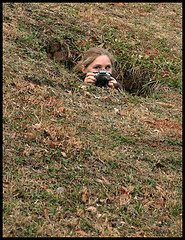I'M IN LOVE WITH BENCHMARKING. I love gathering data about organizations, but not simply for gathering's sake. It's got to be focused information that can help to paint a picture about success (or the potential for success). For me, benchmarking is a nifty tool that can help to answer two key questions every nonprofit needs to ask: 1) how can I tell how my organization's doing until I start to compare it with similar or better organizations? and 2) how can I know all that might be possible for my organization until I know what's out there already?
Benchmarking is one way to get a handle on exactly this type of information. It can be as simple as sending an email or as formal as making an on-site visit with a laundry list of questions for specific staff or board members. What you find out can help you to place your organization on the great continuum of organizations like yours. It gets you grounded and lets you know if your organization is at or near the top of its game, or has many miles to go. No matter how simple or complicated your benchmarking, here are what I think the overriding factors are to make your benchmarking the most useful for you:
- get very clear on what you want to find out. Unless you want to do just a general overview for comparison, i.e., budget size, number of staff, size of board, extent of programming, etc., make your focus for benchmarking fairly tight.
- choose organizations based on what you want to find out. Looking to elevate audience development activities, for example? Put your thinking cap on and choose benchmarking prospects that do audience development really well.
- always benchmark organizations that are at or above your own organization's level (whether it be size or programming sophistication). Benchmarking organizations that are below your organization's level won't necessarily teach you anything new or help you raise the bar.
- never benchmark organizations you know are mediocre -- that's a waste of time in my book.
- develop a list of questions from which to work and stick to them; do this so that you can compare organization to organization (sure, sidebar conversations are great and you may discover something you'll want to explore that you hadn't anticipated, but make sure you cover your primary list first).
- benchmark across geographic areas and the nonprofit spectrum. Depending upon the topic of your interest, a for-profit might be a likely prospect. This is about moving out of your comfort zone a bit to discover possibilities you might not have thought of before.
Photo: Whack a mole! from catgotti via Flickr



Comments